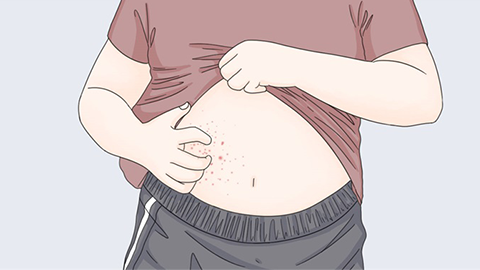What to do if contact dermatitis occurs
Generally, contact dermatitis may be caused by weak skin barrier function, exposure to irritants, allergic contact dermatitis, secondary infection of seborrheic dermatitis, or chronic eczema combined with contact irritation. It is recommended to seek medical attention promptly, identify the underlying cause, and improve symptoms under a doctor's guidance through general management, medication, and other treatments. Specific causes are analyzed as follows:

1. Weak skin barrier function: Thin stratum corneum and reduced sebum secretion lead to poor resistance against external stimuli, making the skin prone to inflammation triggered by environmental factors, manifesting as redness and dryness. Daily use of gentle moisturizing creams is recommended. Avoid frequent exfoliation and minimize washing with hot water.
2. Exposure to irritant substances: Direct skin contact with detergents, disinfectants, strong acids, or alkalis can trigger inflammatory reactions, causing erythema and itching. Immediately rinse the affected area with clean water to remove residual irritants. Avoid further contact with such substances and, if necessary, wear protective gear such as gloves to reduce direct skin exposure.
3. Allergic contact dermatitis: Contact with allergens such as pollen, metal jewelry, or cosmetics triggers an allergic reaction in the body, leading to rashes and vesicles. Patients should follow medical advice to use medications such as desonide cream, mometasone furoate gel, and loratadine tablets for treatment.
4. Secondary infection of seborrheic dermatitis: Inflammation occurs in areas with active sebaceous glands. After secondary bacterial infection, contact with external substances may worsen symptoms, presenting as oily red patches and scaling. Patients should follow medical advice to use ketoconazole cream, metronidazole gel, and levocetirizine hydrochloride capsules to alleviate symptoms.
5. Chronic eczema with contact irritation: Patients with chronic eczema have long-term sensitive skin, which is easily triggered into contact dermatitis upon exposure to external irritants. Symptoms tend to recur and are accompanied by intense itching. Patients should follow medical advice to use tacrolimus ointment, halometasone cream, and ebastine tablets to relieve symptoms.
In daily life, avoid spicy and irritating foods. Consume more vitamin-rich foods such as oranges and spinach. Maintain a regular sleep schedule and avoid staying up late. Wear loose, breathable cotton clothing to reduce skin friction. Comprehensive skincare measures can promote skin recovery and maintain healthy skin.





